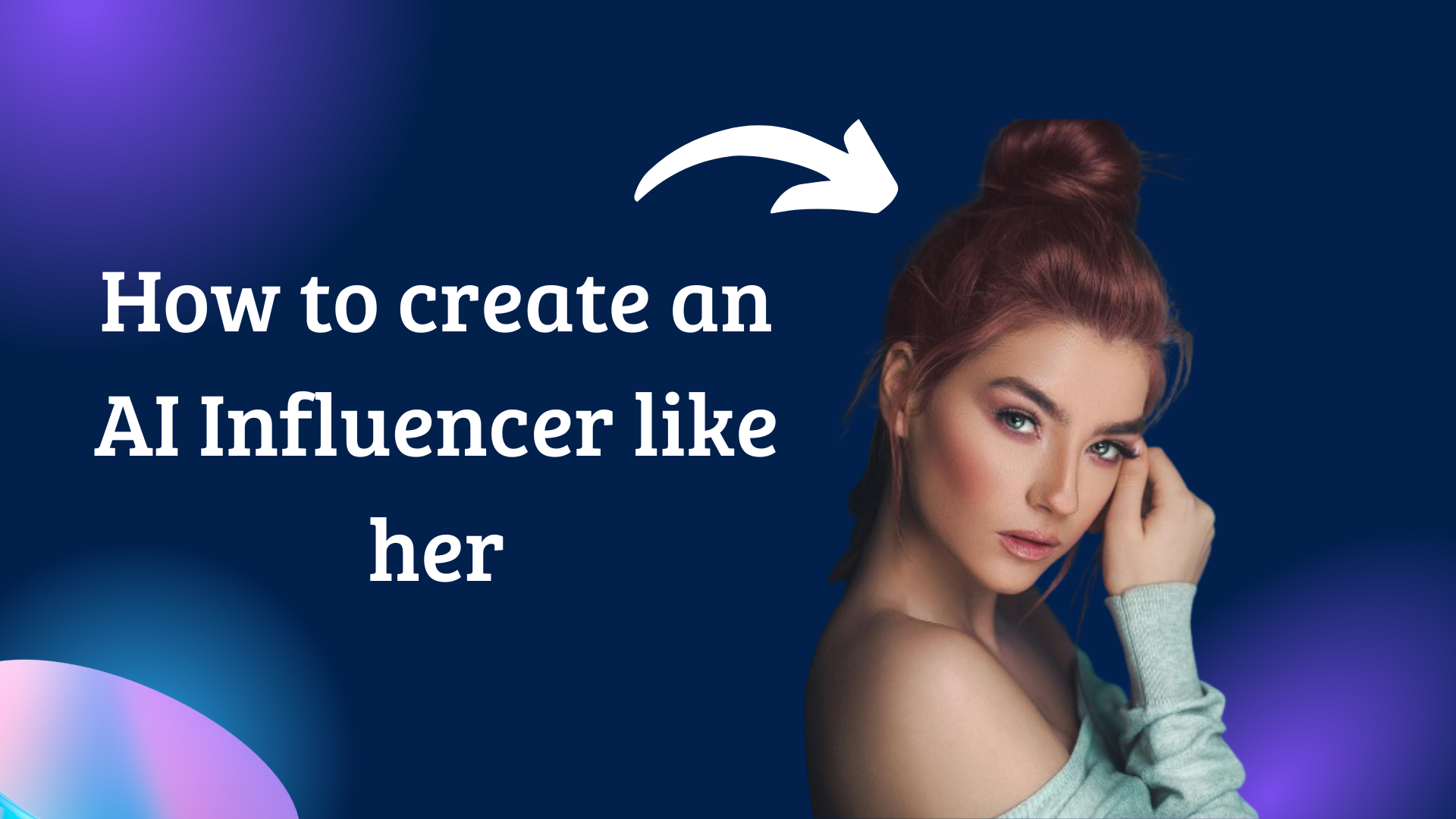What is an AI influencer?
An artificial intelligence-generated social media figure is known as an AI influencer. These lifelike virtual representations of people can be made to resemble anybody and can be programmed to say and do anything.
Why do individuals enjoy AI influencers?
AI influencers appeal to brands and marketers for a variety of reasons, even if they are now still a niche category of creators: They let companies experiment with new and creative approaches to connecting with their target audience. Brands can fully control the messaging and branding when they work with AI influencers.
How to Create an AI Influencer – A complete guide
Step 1: Identify Your Audience and Niche
Determine Who Your Target Market Is by Taking Into Account Their Age, Interests, Lifestyle, and Internet Usage. For instance, if Gen Z is your target market, you may want to concentrate on eco-friendly or tech-savvy trends.
Examine Current Trends: Utilize resources such as BuzzSumo or Google Trends to determine what is currently popular in the niche you have selected. Look for trends like at-home exercises or wellness applications, for example, if you’re targeting the fitness niche.
Select your preferred influencers as well as the crowd’s picks.
Step 2: Create the Persona for the AI Influencer
Character & Backstory: Write a thorough character backstory. If your AI influencer is interested in fashion, for example, it’s possible that they were a small-town designer who rose to fame in Paris.
Characteristics of the Mind: Select characteristics that your target will identify with. Your AI influencer might be approachable and real if your audience is genuine.
Download the images, captions, and biographies of the top ten influencers in each niche using ChatGPT to spark ideas. One by one, upload it to ChatGPT as an attachment (at this time, ChatGPT does not support social platform surfing).
Prompts such as “Examine the accomplishments, limitations, and distinctive perspectives that contribute to those influencers’ success in their particular niche” can be employed. Create a narrative for a stylish AI influencer that targets millennials based on the data that was obtained, or “Suggest personality traits for an AI influencer in the eco-friendly lifestyle niche.”
Step 3: Utilize AI-Powered Technology
Selecting the Correct Image Generator: For realistic visuals, use the Leonardo Diffusion XL Model with PhotoReal + Alchemy settings. Most likely the most intricate and realistic Gen AI model.
Select the “Cinematic” option to guarantee excellent, eye-catching content.
Step 4: Designing your AI Influencer Visually
Create the Appearance: Try out many styles until you discover one that complements your influencer’s persona and appeals to your intended audience.
Consistency: To strengthen brand identity, keep all content with the same visual theme.
Step 5: Create Accounts on Social Media
Platform Selection: Find out which platforms are most popular with your target audience (such as YouTube, Instagram, and TikTok).
Making of a Profile: Create visually beautiful profiles that convey your influencer’s persona and niche in a clear and concise manner.
Step 6: Management of Content
Content Planning: Create a variety of content kinds (such as articles, tales, and videos) that complement the interests of your audience and the persona of your influencer.
Storytelling: To make your influencer’s material interesting and relatable, create stories based on their opinions or experiences.
Step 7: Participation and Development
Interaction: Manage follower engagement by setting up automated replies or by utilizing AI techniques.
Collaborations: To increase visibility and reputation, team up with influencers or related brands.
Step 8: Monetization
Sponsored Content: Find companies that share your influencer’s beliefs and specialty, then work together.
Affiliate Marketing: Include affiliate marketing into your content in a way that seems organic and unobtrusive.
FanVue: Use personalized content or a subscription model to monetize adult content creation.
Step 9: Examine and Modify
Performance Monitoring: Examine statistics on a regular basis to find out which material works best, then modify your approach accordingly.
Flexibility: Be willing to change your influencer persona or content approach in response to input from your audience and shifting market trends.
Step 10: Ethical and Legal Aspects
Transparency: Don’t hesitate to reveal your influencer’s AI identity or that of any sponsored content.
Regulatory Compliance: To make sure your material complies, keep up with social media and advertising restrictions.
